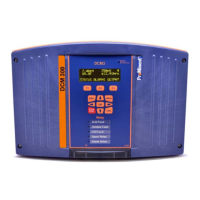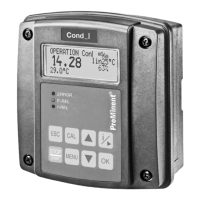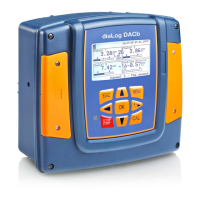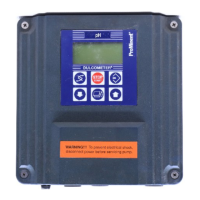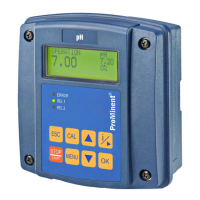DCM 2 Installation
Page 10
2.2.1. Sample Connections
Modular Sensor Housing (DGMa)
• When shipped separately, the DGMa Sensor housing is mounted to a small white acrylic
backpanel.
• Mount plate within 60” of the DCM2 controller, and allow at least 18” clearance above the top of
the mounting plate. Do not mount in direct sunlight as this will promote algae growth and create
temperature swings not representative of the pool or spa under control.
• Using the typical installation drawings on the following pages, connect sample tubing to the DGMa
modular sensor housing and the main recirculation lines, using the fittings supplied.
NOTE: The default mounting of the modular
housing is to flow from left to right (note the flow
direction molded into each module).
• If preferred, the modular housing is
reversible by removing the assembled
modules from the black upper snap clips.
• First disconnect the spacer standoff
brackets and pull the module assembly to
unsnap it from the upper clips.
• Once it is loose, simply flip the assembled
modules so that the molded arrows on the
modules are pointing right to left,
• Then reconnect it to the standoff brackets
and remount onto the backpanel.
Adjustment of the standoff brackets
mounting screws may be needed.
• Next, use the typical installation drawing
below as a guide, and connect the sample
supply and return tubing using the selection
of fittings supplied.
NOTE: Keep in mind that a very small sample volume (11-12 GPH) is needed for ProMinent
controllers. That is only (0.18 GPM) compared to other aquatic controllers requiring 1-3 GPM.
Sensor sample should always be taken from downstream of the filter, but up stream of UV or
Ozone treatment system, heater and any chemical injection. Discharge sample into the line
returning to the pool or spa as close to the pool as possible to get the maximum pressure
differential. Using the pressure drop created by other devices like heaters or the UV system works
best.
CAUTION: Never take the sensor sample from unfiltered water as this may introduce hair or other debris into the
flow switch and sample cell. Never return sample to the suction side of the recirculation pump as this will cause a
negative pressure environment (vacuum) for the sensors, which will cause non-warranty damage to the sensors,
and more importantly, will cause erroneous readings and poor water quality control.
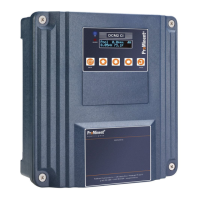
